|
“Atlantis Under Antarctica?”
Pravda, Russia – December 12, 2002
That was headline at Pravda on December 12, 2002. It told that after WW II, scientists started to pay close attention to the issue of a supposedly once-existing civilization in Antarctica:
“In January of 1820, Lieutenant of Russian Empire Fleet Mikhail Lazarev discovered a new continent. In the beginning of 20th century, a Russian encyclopaedia, while adducing the approximate square milage of south pole continent, reported that it was insufficiently explored and there was no flora and fauna. The author of the article also mentioned the richness of the algae and sea life.”
“Twenty years later, the director of the Istanbul National Museum, Khalil Edkhem, was sorting out a library of the Byzantine emperors in an old palace. He found an ancient map made on gazelle skin. On the map, there were the shores of western and southern Africa, as well as the northern shores of Antarctica. Khalil could not believe hiseyes: the shores of the Queen Mod Land, to the south of the 70th parallel, was free of ice. An ancient cartographer marked a mountain chain there.”
The name of the cartographer was known: an admiral of the Ottoman Empire fleet, Piri Reis, who lived in the first half of 16th century. The map’s authenticity was without doubt. Graphology examinations of the notes on the margin confirmed that they belonged to the admiral.
“In 1949, a combined British and Swedish expedition conducted intensive seismic measurements of the South Pole through the ice cap. According to the commander of 8th Technical Investigation Squadron of the US Armed Force Strategic Command, Colonel Harold Olmayer, the geographical details of the bottom part of the map (the shore of Antarctica) correspond with the results of the seismic measurements.”
[Full Story]
“New submarine discoveries spark interest in submerged cities”
Taipei Times, Taiwan – December 01, 2002
“Once dismissed by experts as folklore, the release of photographic and documentary evidence pointing to the possibility of prehistoric human settlements off the coast of Penghu has experts re-examining theories about the legendary continent of Mudalu.
What began this summer as a search for a legendary underwater town off the coast of Penghu by members of the Underwater Archeological Institute (UAI) made headlines earlier this week – but for unexpected reasons.
The expedition failed to locate the town they were searching for, but in late July, the group instead stumbled, or rather swam across, a 100m-long wall-like structure 28m beneath the murky waters of the archipelago’s Hsichi and Tungchi islets.” –
[Full Story]
“Archaeologists announce discovery of
underwater man-made wall”
The China Post, Taiwan – November 26, 2002
“Underwater archaeologists yesterday announced the discovery of a man-made wall submerged under the waters of the Pescadores Islands that could be at least six and seven thousand years old.
Steve Shieh, the head of the planning committee for the Taiwan Underwater Archaeology Institute, said the wall was discovered to the northwest of Tong-chi Island in the Pescadores towards the end of September.
The stone wall, with an average height of one meter and a width of 50 centimeters, covers a distance of over 100 meters, Hsieh said. The wall ran along the ocean floor at depths of between 25 and 30 meters, he added. Shieh said that divers found several places along the wall where holes were apparently filled up with pebbles, possibly in an attempt to block winds.” –
[Full Story]
“16 rare artifacts fished out in Alexandria”
Arabic News, Egypt – November 09, 2002
“The French mission of the European maritime antiquities institute managed to salvage 16 archaeological pieces that were sunk in the Eastern Port area in Alexandria.
The artifacts include a collection of range granite stones, capitals of columns with reliefs dating back to the era of an ancient Roman Emperor, part of the falcon-headed statue of Horus, a 1.6-metre-long white marble statue of a headless man, a black granite masterpiece of a coiled snake and four pieces of rosy granite with hieroglyphic inscriptions that date back to the 26th Dynasty.” –
[Full Story]
“The Horror of the Deep Blue Sea: Giant Megalodon Shark”
Pravda, Russia – October 28, 2002
“Ancient giant shark might still be flourishing in the vast oceans of the planet. The scientific name of the giant shark literally means a ‘great tooth’. Megalodon had these big teeth indeed, according to archeological excavations.
The ancient Carcharodon Megalodon looked like great white shark (Carcharodon carcharias). The Megalodon shark was a great danger to sea-lion populations. Is it still a great danger?
Hundreds of Megalodon teeth that have been found in the oceans and rock beds all over the world prove that the giant shark was about 80 feet long (almost 25 meters). Only a sperm-whale is larger than Megalodon, which makes the giant shark the largest predator on Earth ever, including dinosaurs.” –
[Full Story]
“The shipwrecks of Astypalaia give up their treasure troves”
Kathimerini, Greece – October 26, 2002
“When a fisherman from Astypalaia discovered a dark green object in the sea at a depth of more than 35 meters about two years ago, he had no idea it would make his fortune.
For days he tried to solve the mystery, diving down repeatedly, risking his life in the deep water to bring up 40,000 ancient coins.
Then he called the police, and eventually collected a reward of 120 million drachmas (350,000 euros), approved by the Central Archaeological Council.” –
[Full Story]
“Unique underwater museum in Alexandria”
Arabic News, Egypt – October 10, 2002
“Now that successive teams of French divers have explored the Mediterranean seabed in search of sunken antiquities, amateur divers will have the chance to see the Palace of Sighs that is said to have witnessed the embraces of Anthony and Cleopatra.
The opening of Alexandria’s first diving center will give tourists the opportunity to survey the wondrous treasures that lie beneath the waves.
Underwater excavation began in l934, after a British Royal Air Force pilot noticed the wreck of a vessel in Abu Qir Bay from 3,000 feet. Volunteers led by Emir Omar Tusun attempted to bring the wreck to the surface.” –
[Full Story]
“Police return sunken treasure”
BBC News Online, UK – October 08, 2002
“Police will hand antiques valued at £70,000 back to Italian authorities on Wednesday. The treasures were illegally salvaged by four divers, who lived in Norfolk and Suffolk, from a ship called the Pollux, which sank off the Italian island of Elba in 1841.
Metropolitan Police Detective Sergeant Vernon Rapley, the head of the Arts and Antiques Unit, left for Florence on Tuesday to present the artefacts to the Italian Minister for Culture. They are then expected to be given to a museum in Pisa.
According to a report earlier this year on diving website Divernet, the four recovered 311 gold coins, 2,000 silver coins, several diamonds and some gold jewellery.” –
[Full Story]
“Scientist studies death in the deep sea”
New Zealand Herald, New Zealand – September 18, 2002
“An Auckland scientist has found that climatic changes wiped out up to a quarter of the world’s deep-sea life forms more than 600,000 years ago.
He has documented a dramatic period of deep-sea extinctions between 600,000 and 900,000 years ago, when the Earth’s cycle of warming and freezing suddenly became longer and more severe.
The period is much more recent than the two other major marine extinction episodes that have occurred in the past 100 million years.” –
[Full Story]
“Archaeologists fight to save medieval vessel”
The Guardian, UK – August 09, 2002
“A storm of protest is rising over the probable fate of a medieval ship found preserved in the muddy bank of the river Usk in Newport, south Wales.
The next month could be more dangerous for the ship than the past 500 years. The local museum has neither the resources nor the space to excavate, preserve and display the ship and no other museum has expressed an interest in it.
Dai Morgan Evans, secretary of the Society of Antiquaries, said: ‘This is the Welsh Mary Rose – it is shameful that a ship of such importance is not going to be preserved, and incomprehensible that the Welsh authorities are showing so little interest in their history.’“ –
[Full Story]
“Lake ‘Monster’ Jumps Back to Sight in Northeast China”
People’s Daily, China – July 31, 2002
“The ‘Monster of Tianchi Lake’ in the Changbai Mountains in Jilin Province, Northeast China, is back in the news after several recent sightings were reported.
It was spotted twice by hundreds of people in different parts of the lake, according to Meng Fanying, director of a Songjiang District Tourism Bureau.
Meng said the monster, which seems to be black in colour, was 10 metres from the bank during the most recent sighting, and jumped out of the water from time to time like a seal.” –
[Full Story]
“Clues to ‘missing pagodas’ found at Mahabalipuram”
On July 06 2002 the Times of India reported that the archæological Survey of India’s Underwater Archæology Wing, (UAW), has discovered three walls and a number of carved architectural pillars of ancient temples, running north to south and east to west, in the Bay of Bengal off the coast of Mahabalipuram. The report said that they also found seven big submerged rocks about 500 metres off shore. The discoverers believe that the ruins could well solve the mystery of seven pagodas dating back to the Pallava Period in the 7th Century AD.
The dives were carried out by the man in charge of the UAW project, Alok Tripathi, who went about 500 metres east and north of the remaining onshore temple in November 2001, and again in March this year. He told the Times of India:
” … the walls are made of thick slabs of granite. Two long stone slabs, each with two vertical slits to receive two other stone slabs, were kept upright. Several such blocks arranged in a row formed a wall. The remnants are well carved and look like mouldings and pillars of temple. They are similar to the carvings in the existing temples of Mahabalipuram.”
The ASI are planning further dives to the south of the shore temple, where Tripathi said he was hopeful of discovering more underwater structures in the coming months. The whole area was once above sea-level. In fact, during Pleistocene era there was a great deal of land linking India to Sri Lanka, and stretching out into the Bay of Bengal on the continental shelf. Tripathi told the Times of India:
“We are planning to dive during the Tamil month of Tai which falls between December and January. We will trace the extension of submerged structures and clean them to reconfirm our conclusion about their nature and purpose.”
|
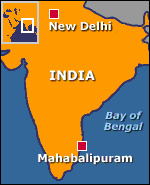
BBC Online
|
|
The story of submerged offshore temples was first recorded by early British travellers, one of whom had been told by older inhabitants of the area that they could remember seeing the tops of the pagodas out to sea during their youth.
The story appeared on Thursday, April 11th, 2002, on the BBC News Online website, which reported that divers from an Anglo-Indian exploration team had discovered, a ‘lost city’ only 15 to 21 feet underwater about half a mile or so offshore near Mammalapuram (Mahabalipuram) in Tamil Nadu, southeast India.
|
The map above is a link direct to the April 2002 story that appeared on the BBC website. Click on it to go directly there.
This confirmation by the Archæological Survey of India of the existence of the structures first referred to by Graham Hancock in his February/March 2002 UK TV documentary programmes “Flooded Kingdoms of the Ice Age”, which accompanied the release of his latest book “Underworld”, is heartening to all who believe that there is much more down there to find.
Perhaps now marine archæologists will begin to re-focus their efforts away from old shipwrecks, and look more closely at the multitude of strange shapes covered in undersea plantlife on the coastal plains all over the world …
“Divers told to return sunken treasure”
BBC News Online, UK – July 04, 2002
” Divers have been told to hand over a £100,000 haul of treasure recovered from a shipwreck after police suspected the find was stolen.
The divers, from Norfolk and Suffolk, brought the haul of gold and diamonds ashore from a wreck near Elba, off Italy, two years ago.
The group claim they had permission to recover what they thought was cargo from a merchant ship. But the Metropolitan and Italian police officers believe the find was stolen from the scene.” –
[Full Story]
“India’s ‘miracle river'”
BBC News Online, UK – June 29, 2002
“The legend of the mighty Saraswati river has lived on in India since time immemorial.
Ancient Hindu scriptures called the Vedas, recorded thousands of years ago, are full of tantalising hymns about it being the life-stream of the people.
Vast and awesome, the Saraswati’s holy waters are supposed to have flowed from the Himalayas into the sea, nourishing the land along the way. But as the centuries passed and no one could find it, myth, belief and religion came together and the Saraswati passed into the realm of folklore.” –
[Full Story]
“Risen from the deep: The sunken treasures of old Alexandria”
The Times, UK – June 23, 2002
“Underwater archaeologists working among the ruins of Heracleion in Abu Qir Bay have came across objects dating from the 8th century, proving that the ancient port did not disappear beneath the waves until well into the Islamic period.
The new evidence, which is of considerable interest to historians, was discovered during a 15- day archaeological survey to define the topography of Heracleion and pursue excavation of the sunken Amun temple at Abu Qir.
Golden coins lifted from the sea bed date from the reigns of the Byzantine emperors and the caliphs of the early Islamic period, providing positive proof that this city at the mouth of the Canopic branch of the Nile could not have disappeared before the 8th century AD.” –
[Full Story]
“Heracleion emerges”
Al-Ahram Weekly, Egypt – June 06, 2002
“Underwater archaeologists working among the ruins of Heracleion in Abu Qir Bay have came across objects dating from the 8th century, proving that the ancient port did not disappear beneath the waves until well into the Islamic period.
The new evidence, which is of considerable interest to historians, was discovered during a 15- day archaeological survey to define the topography of Heracleion and pursue excavation of the sunken Amun temple at Abu Qir.
Golden coins lifted from the sea bed date from the reigns of the Byzantine emperors and the caliphs of the early Islamic period, providing positive proof that this city at the mouth of the Canopic branch of the Nile could not have disappeared before the 8th century AD.” –
[Full Story]
“Two ancient towns more than 1,800 years old
discovered in Chinese lake”
People’s Daily, China – May 31, 2002
“Two ancient towns, both more than 1,800 years old, have been discovered under the Qiandao Lake in eastern Zhejiang Province.
After a preliminary investigation, experts believe they might be the biggest ancient buildings ever found in perfect condition in China.
Located near the Xin’an River, Chun’an and Sui’an started as counties in Eastern Han (25-220). The two towns were buried 40 years ago to make way for a reservoir.” –
[Full Story]
“Experts in submarine technology find bonanza
of historical artifacts”
The Detroit News, USA – May 31, 2002
“Rapid improvements in undersea technology are handing explorers surprise after surprise as they comb the ocean depths for ancient wrecks and hints of history.
At a recent conference here on the expanding methods for deep-sea searching, experts in submarine technology reported finding historical artifacts in Lake Champlain, astronaut Gus Grissom’s sunken Mercury space capsule in the Atlantic east of Florida and a long-missing German U-boat in the Gulf of Mexico.
‘There are pleasant surprises in terms of how large the community (of marine archaeologists) has grown,’ said archaeologist Aaron Brody, at the Massachusetts Institute of Technology. ‘And there have been technological advances, especially in terms of AUVs, autonomous underwater vehicles, which are not tethered to a research ship.’“ –
[Full Story]
“Sunken Heracleion”
Al-Ahram Weekly, Egypt – May 30, 2002
“Gold and bronze jewellery, coins, plates, amulets and other treasures have been recovered from the sea bed of the ancient city of Heracleion by the Franco-Egyptian mission which began underwater excavations at the site two years ago, reports Nevine El-Aref.
In the course of a survey to define the topography of the sunken city and to pursue excavations of the Amun temple identified last season, underwater archaeologists came across another treasure horde.
According to Jean Yoyotte, professor at the Collège de France, excavations have revealed important information. Only 250 metres from the main temple, coins dating from the Byzantine emperors and the caliphs of the early Islamic period were found, corroborating an ancient text which says Heracleion was still inhabited at the end of the Byzantine era.” –
[Full Story]
“New finds worldwide support ‘Flood Myths’“
On May 28 2002 the
National Geographic News reported on the many recent discoveries underwater on the coastal shelves around the world. We could not improve on their introduction, which led with:
“Ancient stories of massive floods pass from generation to generation and in many places in the world are integral to a people’s spoken history. The tales differ by locale, but commonly feature either torrential rains or a hugely destructive wall of water bursting into a valley, destroying in its path. In many cases, the flooding is an act of retribution by displeased gods.
Scientists, historians, and archaeologists view many of these enduring tales as myth, legend, or allegoric tales meant to illustrate moral principles. Recent findings indicate that at least a few of them could be based on real floods that caused destruction on an enormous scale.”
Firstly they looked at the recent discovery of megalithic ruins some 2,200 ft below sea level, off the coast of Cuba. Interviewing geologist, Manuel turralde, the director of research at Cuba’s Natural History Museum, who stressed the need for an open mind while investigations of the site continue, National Geographic reported that the Canadian exploration company that discovered the formations, Advanced Digital Communications (ADC), has suggested that they could be the buildings and monuments of an early, unknown American civilization. Iturralde told them:
|
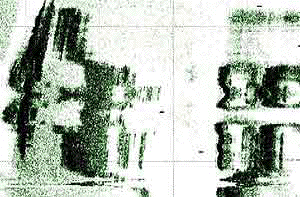
ADC Exploramar
|
|
“These are extremely peculiar structures, and they have captured our imagination,” and added that, “If I had to explain this geologically, I would have a hard time.”
Iturralde went on to note that conclusive proof of man-made structures on the site would reinforce some oral traditions of the Maya and native Yucatecos.
|
These people still retell ancient stories of an island inhabited by their ancestors that vanished beneath the waves. And this, of course, is a familiar story in many cultures widely distributed around the world.
Paulina Zelitsky, the Polish-Canadian projects director of ADC, and her crew are believed to be currently aboard their research vessel, “Ulises”, on another expedition in the deep waters of Cabo de San Antonio, off the coast of Cuba’s Guanahacabibes Peninsula, where they reported late last year that they had found unusual formations of smooth blocks, crests, and geometric shapes. Her husband and partner in ADC, Dr Paul Weinzweig, told the
Canadian Globe & Mail last December that some of the structures within the complex may be as long as 400 metres wide and as high as 40 metres.
Some of the stills taken from the first video footage gathered by their R.O.V. (Remotely-Operated-Vehicle) had clearly shown “symbols and inscriptions”, though at that time they could not say for certain which language they were written in. Perhaps this summer’s expedition might shed some more light on this exciting aspect of their discovery. Data thus far has been collected using sidescan sonar and video, and collecting samples from the granite blocks and the sediment in which they are imbedded is the next step, reported National Geographic. Some researchers say that the discovery could completely alter the currently held views about the origins of ancient North American civilisation.
Next National Geographic News took a look at the recent underwater temples discovered offshore at Mahabulipuram, Tamil Nadu, in southeast India. Local legends tell that the area once had seven magnificent temples, but that six of these were swallowed by the sea. The seventh, and only remaining temple, still stands on the shore. Passed from generation to generation, the local folklore tells of a beautiful city that was destroyed by the gods because they were jealous of its beauty, so sent a flood to submerge it beneath the sea.
“Rescue begins for seabed relics from 6000BC”
The Guardian, UK – May 27, 2002
“A time capsule from the stone age, described by English Heritage chief archaeologist David Miles as unique in Britain and of international importance, is threatened by a combination of changing sea levels, dredging and trawling, and the wakes of boats and ferries crossing the Solent straits between the Hampshire coast and the Isle of Wight – as well as the effects of the weekend’s gales.
Parts of the site lost six inches of protective silt and peat this winter alone.
On the sea bed, which was dry land until 6,000BC, prehistoric stone tools still lie where they were made or dropped, among the roots of giant oak trees. The first finds, including flint arrows and knives, recently brought up by archaeologist divers, are so perfectly preserved they look like modern replicas.” –
[Full Story]
|
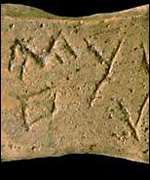
BBC Online
|
|
On Tuesday, May 22nd, 2001, BBC Online reported the initial discovery of what was then only thought to be structures that ” … resemble archæological sites belonging to the Harappan civilisation, dating back more than 4,000 years.” It is now suspected that they are much earlier still, and BBC Online reported:
“A leading marine archæologist says that far more detailed investigations need to be done to confirm the exact date of the structures.
S. R. Rao, who has spent years researching the nearby Gulf of Kutch, said the only conclusive way of establishing the antiquity of the site was by studying pieces of submerged pottery from the same area.”
|
Since May 2001, those in charge of the Indian marine archæological research project in the Gulf of Khambhat (Cambay) have come increasingly to believe that the remains are very definitely pre-Harappan, and Graham Hancock has dived in the company of some of their leading marine archaeologists in many areas around the coasts of India. Sceptics, both academic and otherwise, and especially those who missed the recent (February/March 2002) programmes on UK Channel 4, “Flooded Kingdoms of the Ice Age”, should read Hancock’s recent (February 2002) book “Underworld”, before they go pronouncing any further about the ‘impossibility’ of any remains of pre-holocene civilisations being discovered offshore. They already appear to have been – in Japan and in India in depths of up to 300 feet underwater, and also in Cuba, where the remains of a vast city have, amazingly, been found some 2,200 feet underwater.
There’s no glory in stiffling debate about prehistory, and there’s equally no shame in being wrong about the chronology of human civilisation. Perhaps the time has come for our academics to admit their errors, as Hancock
has done recently on UK Channel 4, and to an audience the size of which most of them can only dream about. Both are looking for clues about the origin of civilisation, and to his credit, Graham Hancock, for his part at least, is prepared to admit:
“In doing so I’ve occasionally followed highly speculative leads, some of which I now realize have led me wide of the mark. This has attracted a lot of criticism, some of it richly deserved. But none of it’s convinced me that there couldn’t be a big missing chapter in man’s early history.”
“Divers explore key prehistoric site”
BBC News Online, UK – May 22, 2002
” An underwater prehistoric site in Hampshire, considered one of the most important in the UK, is to be examined by archaeologists.
Diving equipment will be used to try to find artefacts from the submerged site in the western Solent, near Hurst Castle.
English Heritage recently became responsible for ancient monuments around the coastline and chose the Solent site as the first maritime location it explored.” –
[Full Story]
“Underwater Japanese Pyramid
‘Manmade’ say Scientists”
On May 9 2002 a report on Whitley Strieber’s Unknown Country brought news that Frank Joseph, editor of “Ancient American Magazine”, would speak that night on “Dreamland” about a conference he recently attended in Japan at which Japanese geologists and archæologists argued that the sunken pyramid off the island of Yonaguni near Okinawa has been found to be manmade. It reported that:
“The structure was found by dive tour operator Kihachiro Aratake in 1985 and has been a source of controversy ever since. It appears to be a construction made of wide terraces, ramps and large steps. However, American geologists have contended that the structure is not manmade, but a natural formation.
According to the report, Japanese scientists have documented marks on the stones that indicate that they were hewn. Not only that, the tools used in this process have been found in the area, and carvings have been discovered. A small stairway carved into the rocks appears to render the theory that this is a natural formation implausible.”
|
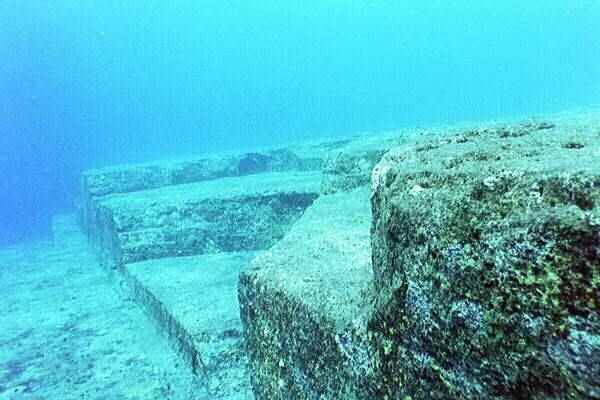
Dr. Robert M. Schoch
|
|
The story went on to report that the enigmatic underwater structure that was discovered by dive tour operator, Kihachiro Aratake, in 1985, has shown more evidence of being man-made.
“It appears to be a construction made of wide terraces, ramps and large steps. However, American geologists have contented that the structure is not manmade, but a natural formation.”
|
Presumably, they were referring to Dr. Robert M. Schoch, a geologist and tenured professor at Boston University, who has dived on the structure for inspection a number of times since 1997.
Dr Schoch has made it clear that he feels the structure was (like the Great Sphinx of Egypt?) primarily a natural structure that people in ancient times carved or enhanced to suit their purposes. His comments in 1999 were:
“We should also consider the possibility that the Yonaguni Monument is fundamentally a natural structure that was utilized, enhanced, and modified by humans in ancient times.”
This type of activity seems to have been widely used in ancient times all over the archaic world, and has become known as ‘terra-forming’. Nature suggests a shape, and human hands go to work it to modify it as they want or need it to look. This could have been done for ritual purposes, or for purely practical ones. No-one is yet sure – and speculation is rife.
According to the report of the conference in Japan, there have been a number of discoveries recently that add a great deal of weight to the theory that the structure was certainly ‘terra-formed’ at least by ancient people:
“Japanese scientists have documented marks on the stones that indicate that they were hewn. Not only that, the tools used in this process have been found in the area, and carvings have been discovered. A small stairway carved into the rocks appears to render the theory that this is a natural formation implausible.
The problem with all of this for western scientists is that it implies that an unknown eastern culture had developed a high degree of organization thousands of years before the earliest western civilizations. Geologically, the Yonaguni pyramid sank into the ocean at the end of the last ice age, around ten thousand years ago. Some western geologists have theorized that, if it is manmade, it must have risen from the sea in more recent times, and been carved then.
However, the discovery of other, similar structures beneath the sea of Japan was also announced at the conference. If these prove to be similar to the Yonaguni pyramid they may rewrite the history of early man.”
Studies of the structure, such as that undertaken by Dr. Masaaki Kimura, a professor in the Department of Physics and Earth Sciences at the University of the Ryukyus, were responsible for initiating the debate that currently rages about Yonaguni. In September 1997 Dr Schoch dived on the structure for the first time. He had been invited there by Graham Hancock, who was then researching his book
“Heaven’s Mirror”, filming for a series of TV programmes, and laying the groundwork for his most recent book “Underworld”.
|
Dr Schoch and Prof. Kimura
on Yonaguni Island 1999

Dr. Robert M. Schoch
|
|
Whilst there, Dr Schoch debated the structure, and also the local geology of nearby Yonaguni Island, with Prof. Masaaki Kimura, whose work on the 8 assorted structures underwater in that area had come to the attention of the writer and broadcaster, Graham Hancock, some time earlier.
The controversy that erupted was covered in The Japan Times on July 19 2000, which also reported on the ancient myths and legends of the Okinawa region:
|
“In Okinawan folklore, there are tales of traditional gods and a land of the gods called Nirai-Kanai, an unknown faraway land from where happiness is brought. Kimura said the Yonaguni Monument may have been built to serve a similar deity.”
No doubt we will be hearing a lot more from the Yonaguni area in the near future, as structures have been recently discovered underwater of other Japanese islands such as Aguni and Kerama, and we are reliably informed that walls, and possible ancient roads have been discovered in the Straits of Taiwan, about 20ft to 30ft underwater between the island of Taiwan and mainland China. Watch this space …
Another ‘Lost Underwater City’ found
off the coast of India
Another ‘lost city’ has been discovered by divers off the coast of India.
BBC News Online on Thursday, April 11th, 2002, reported a story that divers from an Anglo-Indian exploration team had discovered, a ‘lost city’ only 15 to 21 feet underwater about half a mile offshore near Mammalapuram (Mahabalipuram) in Tamil Nadu, southeast India. It was found by a joint team from the Dorset, England, based organisation, the Scientific Exploration Society, and marine archæologists from the Indian National Institute of Oceanography. The story was covered by the BBC News,
The Guardian, and the UK Daily Telegraph, which reported that the expedition team discovered huge granite blocks and walls 20 feet below the surface. The expedition leaders referred to the ‘myth of Mahabalipuram’, which spoke of an ancient city that was ‘so beautiful that the gods became jealous and sent a flood that swallowed it up entirely in a single day’.
|
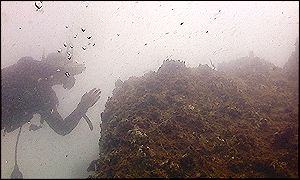
BBC Online
|
|
On their website, BBC Online reported that the myths were first set down in writing by an 18th century British traveller, a Mr J. Goldingham, who visited the coastal Indian town in 1798 when it was known to sailors as the Seven Pagodas.
“The myths speak of six temples submerged beneath the waves with the seventh temple still
standing on the seashore.”
|
The discovery could well date back over 5,000 years, although initial reactions to the discovery by archæologists is typically cold.
The ruins cover many square miles, and the BBC TV News showed images of a reconstruction of the mass of submerged buildings that the Anglo-Indian team have discovered. BBC Television News showed some interesting underwater footage of a strange ‘U-shaped’ structure that was reminiscent of the ‘horseshoe-shaped’ standing stones at Stonehenge. They were found during dives on April 1st 2002, though no-one yet is suggesting the date has any significance, and announced that another expedition is planned for 2003. The expedition leader, Monty Halls, told the BBC News Online:
“Our divers were presented with a series of structures that clearly showed man-made attributes. The scale of the site appears to be extremely extensive, with 50 dives conducted over a three-day period covering only a small area of the overall ruin field. This is plainly a discovery of international significance that demands further exploration and detailed investigation.”
|

BBC Online
|
|
The joint expedition team also included author and explorer, Graham Hancock, who had approached S.E.S. after diving off the coast of India in 2001, and gathering the myths and legends of the area regarding an ancient Tamil ‘sunken city’.
The expedition team has put up a new website just dealing with this discovery at http://www.india-atlantis.org/, and Hancock told the BBC:
“I have argued for many years that the world’s flood myths deserve to be taken seriously, a view that most western academics reject.”
|
Scientists now want to explore the possibility that the city was submerged following the series of abrupt sea-level rises which they believe marked the end of the Pleistocene era, and the postulated melting of the ice-caps that are supposed to have covered much of the northern hemisphere.
This discovery featured in the recent (February/March 2002) UK Channel 4 television programmes, “Flooded Kingdoms of the Ice Age”, which accompanied the publication of Graham Hancock’s recent (February 2002) book “Underworld”, both of which contained new underwater images of the enigmatic Yonaguni monument that was found almost 15 years ago off the coast of Yonaguni-Jima, Japan. They also contain unique underwater photographs of the structures found last year off the northwestern and southeastern coasts of India, at Khambhat (Cambay), and the new Indian discovery announced in April 2002 off the coast of Mammalapuram (Mahabalipuram) in Tamil Nadu, southeast India.
As the interest in ‘sunken cities’ and ‘submerged civilisations’ around the world continues to grow, the ‘History Channel’ has released VHS copies of its February 2002 television programme, “Japan’s Mysterious Pyramids”, which has some very interesting, and unique, underwater footage of this structure that is puzzling archæologists and geologists alike.
It seems that the Indian National Institute of Oceanography (NIO) has released information about the discovery at Mammalapuram (Mahabalipuram) and not mentioned the part Graham Hancock played in putting them together with S.E.S. The Indian Audarya Fellowship Forum has some interesting comments about the discovery and the NIO, including comments from Hancock about his disappointment with the ‘snub’. Hancock’s own reactions to the news story are here
…
There is an interesting report of the discovery on the
Ananova website, with an interesting underwater picture we’ve not seen before. While there was coverage of this story in The Independent, which highlights the ‘1500 year’ date proposed by some archæologists, and also an interesting article in The Times of London.
“Divers find remains of six ‘lost temples'”
The Daily Telegraph, UK – April 11, 2002
“A MYSTERIOUS settlement that sank beneath the waves at least 1,200 years ago has been discovered by divers off the south-east coast of India.
Granite blocks and walls that lie 20ft below the surface may be the remains of six “lost temples” that form part of local mythology.
The ruins came to light after the controversial amateur archaeologist and best-selling author Graham Hancock interviewed fisherman for a recent television series.” –
[Full Story]
“Divers find ruins of mythical city off India”
Ananova, UK – April 10, 2002
“Explorers believe they have discovered remains of a mythical city off the coast of India. According to legend it was swallowed up by the sea about 2,000 years ago.
An expedition from the Scientific Exploration Society and India’s National Institute of Oceanography discovered the ruins off the coast of Mamallapuram in Tamil Nadu.
Structures which appear to be man-made were found at depths of five to seven metres. Local legend tells of a great city containing seven temples, so beautiful that the jealous gods sent a flood to engulf it.” –
[Full Story]
“Probe Into Cuba’s Possible ‘Sunken City’ Advances”
The Macon Telegraph, USA – March 29, 2002
“Scientific investigators said on Friday they hope to better determine later this year if an unusual rock formation deep off Cuba’s coast could be a sunken city from a previously unknown ancient civilization.
‘These are extremely peculiar structures … They have captured all our imagination,’ Cuban geologist Manuel Iturralde said at a conference after a week on a boat over the site.
‘If I had to explain this geologically, I would have a hard time,’ he told reporters later, saying examination of rock samples due to be collected in a few months should shed further light on the formation off the Guanahacabibes Peninsula on Cuba’s western tip.” –
[Full Story]
“Theory of sunken town off Cuba to get support
from geologist’s findings”
CNews, Canada – March 27, 2002
“Getting to the bottom of the mystery of what could be a lost underwater city near Cuba is far more exciting for a Canadian-led expedition than bringing up emeralds from a galleon on the ocean floor.
This week, their discovery of what appears to be a sunken island with massive temple-like structures will receive an important boost from an expert.
Manuel Iturralde, one of Cuba’s top geologists, plans to tell an international conference of geophysicists in Havana on Friday that there is no geological explanation for the megalithic stone formations found in about 700 metres of water some four kilometres off the western tip of Cuba.” –
[Full Story]
“New Probe of Yucatán Crater Ends”
Sky & Telescope, USA – February 25, 2002
“It’s been 11 years since geologists pinpointed the location of a huge impact that, most of them believe, led to the demise of the dinosaurs. The crater lies at the tip of the Yucatán Peninsula, centered on a coastal village named Chicxulub Puerto.
There, 65 million years ago, a chunk of asteroid or comet roughly 10 kilometers across slammed into Earth and gouged out a hole at least 180 kilometers (115 miles) across.
Evidence of this catastrophic event has turned up worldwide, even in Antarctica. However, identifying the crater and getting at it are two very different things.” –
[Full Story]
“Sea threatens Scotland’s history”
Ananova, UK – February 18, 2002
“Archaeologists say coastal erosion is destroying important prehistoric landmarks in Scotland.
They say urgent action needs to be taken in places like the Orkneys if ancient settlements are to be saved.
So far Bronze Age forts have collapsed, skeletons have been washed out of Iron Age burial chambers and part of a Viking grave ship, found in 1991, has disappeared.” –
[Full Story]
“2,500-year-old wine discovered in wreck near France”
Ananova, UK – February 13, 2002
“Hundreds of litres of wine dating from 500BC have been discovered in a wreck at a secret location off southern France.
The Italian wine is contained in 800 terracotta amphorae – vessels designed to hold the drink. Although it is still alcoholic experts say it is not drinkable.
‘It is a phenomenal amount of wine for a ship to be carrying at that period,’ Luc Long, from France’s Department of Underwater Archeological Research told the Daily Express.” –
[Full Story]
“Tracking an ancient denizen of the deep”
IOL/Cape Argus, South Africa – February 13, 2002
“About 260 million years ago, a giant water scorpion well over two metres long made its way slowly over the sea floor, about 100m to 200m below the surface of the water.
This huge, ancient creature may have been making sweeping, brush-like movements with its right feet, collecting small animals like worms and crustaceans from the sediment which it then “combed” with its left feet, pushing the most desirable prey items towards its mouth.
As the water scorpion, or eurypterid as its now known to palaeontologists, moved across the sea bottom, it left complex footprints or tracks of its activity in the mud.” –
[Full Story]
“Castles in the sea”
The Guardian, UK – February 6, 2002
“Is Graham Hancock bonkers? His theories on the origins of civilisation have been dismissed by archaeologists as rubbish. But as he tells Stephen Moss, a discovery off the coast of India may prove him right.
Graham Hancock doesn’t look mad as he sprawls in an armchair in his small, neat house in Kennington, south London. But his critics would say appearances deceive: he is either a lunatic, a charlatan, or both. Hancock has spent the past 10 years writing books and producing TV programmes which argue that everything we are told about ancient history is wrong: civilisation didn’t start in Sumeria and Egypt around 3,500 BC; it began 10,000 years before in great cities which subsequently suffered a cataclysm.
He first expounded the thesis in 1995 in Fingerprints of the Gods (the echo of Erich Von Daniken’s pro-alien Chariots of the Gods is unfortunate). It was restated in Heaven’s Mirror, a glossy book produced to coincide with a Channel 4 series in 1998. His arguments were treated with derision. In 1999 the BBC’s Horizon did a demolition job that was applauded by archaeologists and assorted Hancock-haters. But, undeterred, he is back with another Channel 4 series and a vast tablet of a book, called Underworld, that attempts to provide the evidence for his lost civilisation.” –
[Full Story]
“Lost Underwater City
‘could rewrite history’”
That was headline at BBC News Online on Saturday, January 19, 2002. Written by Tom Housden, it told of a ‘lost city’ discovered 120 feet underwater in the Gulf of Khambhat (Cambay) off the western coast of Gujarat, in India. It was found completely by chance by marine scientists from the Indian National Institute of Ocean Technology, (NIOT), who were conducting a water pollution survey of the area. Oceanographers from NIOT told the BBC that they had discovered archæological remains 120 feet underwater in the Gulf of Khambhat (Cambay) which could be over 9,000 years old.
|
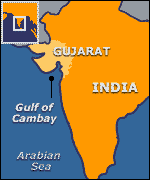
BBC Online
|
|
On the BBC Online website they reported on some of the technique used to make the historic discovery:
“Using sidescan sonar which sends a beam of sound waves down to the bottom of the ocean they identified huge geometrical structures at a depth of 120 feet.”
An assortment of debris was recovered from the site area, including pottery, sections of walls, beads, sculptures and also human bones and teeth, some of which have been carbon 14 dated and found to be nearly 9,500 years old.
|
This amazing discovery is bound to radically change accepted ideas of the prehistory of the Indian sub-continent, as the BBC also reported that:
“The city is believed to be even older than the ancient Harappan civilisation,
which dates back around 4,000 years.”
Indian marine archæologists used a relatively new technique called “sub-bottom profiling” to show that the remains of the many buildings of this vast city, which is five miles long and two miles wide, and said to predate the oldest known archæological remains on the Indian subcontinent by more than 5,000 years, stand on enormous foundations. Naturally, the BBC went to interview Graham Hancock, who, despite the obvious dangers involved, has regularly dived on ancient structures in many parts of the world in pursuit of his belief that there is “a big missing chapter in man’s early history”.
This is a belief which is increasingly being shared by many, including some archæologists, who are reluctantly having to come to terms with the fact that there is quite likely to be much more evidence of ancient civilisation waiting to be discovered at the bottom of the oceans, on continental shelves, and in areas of shallow seas, all over the world. In fact, lying underwater in the Gulf of Khambhat (Cambay), there are not one, but
two massive cities, both around the size of Manhattan, one approx. 8 km long and the other some 9km in length.
As we enter the 21st century, advances in computer technology are allowing Oceanographers everywhere to use sophisticated computer programs in order to simulate what they believe are the ancient sea-levels before the end of the Pleistocene era. As a result, they are discovering huge tracts of land all around the world that were above water some 10 to 15,000 years ago. While this would have been obvious to marine scientists for a many, many years, marine archæologists have tended to restrict their underwater activities to the recovery of ‘sunken treasure’ and have barely, if ever, considered the possibility that ‘any’ evidence of ancient civilisation from before the end of the Pleistocene epoch could be found in exactly the locations they have been discovered over the past decade or so.
Hancock told BBC Online:
“The [oceanographers] found that they were dealing with two large blocks of apparently man-made structures. Cities on this scale are not known in the archæological record until roughly 4,500 years ago when the first big cities began to appear in Mesopotamia. Nothing else on the scale of the underwater cities of Cambay is known. The first cities of the historical period are as far away from these cities as we are today from the pyramids of Egypt.”
Recent discoveries such as that of the Yonaguni structure in the East China sea between Japan and Taiwan, and more recently of a
‘Lost City’ in the Caribbean Sea, between the Yucatan Peninsula of Mexico and the western coast of the Guanahacabibes Peninsula of Cuba, are adding to the sense of awe that many of those involved in the historical sciences generally are beginning to feel as their long-cherished prehistory paradigms are being completely trashed again and again. Hancock told BBC Online:
“There’s a huge chronological problem in this discovery. It means that the whole model of the origins of civilisation with which archæologists have been working will have to be remade from scratch.”
|
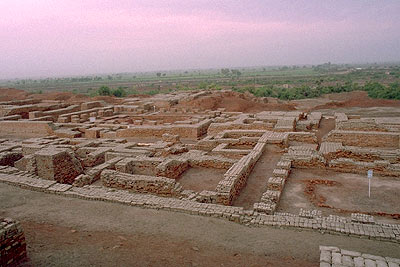
BBC Online
|
|
But, not everyone agrees with Hancock’s argument, preferring to link the discoveries with the Harappan period. BBC Online also interviewed Dr Justin Morris, an archæologist from the
British Museum, who told them that a lot more work would need to be undertaken before the underwater site could be proven to belong to a 9,000 year old civilisation. Dr Morris told BBC Online:
|
“Culturally speaking, in that part of the world there were no civilisations prior to about 2,500 BC. What’s happening before then mainly consists of small, village settlements,”
Dr Morris further told BBC Online that artifacts recovered from the sites of these two massive prehistoric urban settlements would need to be very carefully analysed, and, as the BBC reported, Dr Morris: ” … pointed out that the C14 carbon dating process is not without its error margins.”
True, but this sounds very much like the usual ‘sour grapes’ with which the archæological community has responded to the work which Graham Hancock, and his wife, the photographer Santha Faiia, have painstakingly conducted over the last 5 to 10 years. Unable to accept that they are simply wrong in many respects about prehistory, many academics have stooped to the sort of tactics that were highlighted in the now infamous BBC Horizon-Atlantis affair, concerning two programmes about Atlantis which were broadcast in October and November 1999.
The tactics used there were (a) to examine the not so well-known fact that elements of the German Nazi Party under Adolf Hitler were facinated by the idea of Atlantis, and then (b) to attempt to portray Hancock, and all others interested in Atlantis and the possibility that there may be thousands of ancient cities at the bottom of our oceans, as somehow heading for “a slippery slope” down into the sewer of Nazi ideology.
Entitled “Atlantis Uncovered”, and “Atlantis Reborn”, the programmes should have been more correctly called
“Get Hancock”.
But these are far from the tactics adopted by the BBC Online team, who have treated Hancock with similar respect to that which they treat their own underwater camera operaters, seeming to appreciate the very real dangers of embarking on underwater discovery expeditions of any sort. Acknowledging both Hancock’s logic, and the constant dangers he has faced in his quest for “a big missing chapter in man’s early history”, they reported that:
“It is believed that the area was submerged as ice caps melted at the end of the last ice age 9 – 10,000 years ago.”
BBC Online went on to report that although the first signs of a significant archæological find came eight months ago, exploring the area has been extremely difficult because of the “highly treacherous waters, with strong currents and rip tides”. It seems now that with the recent recovery from the sea floor in the Gulf of Khambhat (Cambay) of carbon-datable artifacts, including pieces of ancient timber, the Indian government has set up a special team to oversee further studies in this area. The Indian Minister for Human Resources and ocean development, Murli Manohar Joshi, who seems convinced by the discoveries of marine scientists from his own National Institute of Ocean Technology, told them:
“We have to find out what happenned then … where and how this civilisation vanished.”
That there will inevitably be much evidence of Pleistocene civilisation discovered on the vast tracts of land submerged after the end of what many scientists believe was the last Ice Age is something that Morien Institute researcher, John Michael, has been saying for quite some time, and it hadn’t gone unnoticed that their January 2002 story was not first time that BBC Online has referred to the discovery of these incredible archæological remains in this eastern part of the Arabian Sea.
“Lost civilisation from 7,500 BC discovered off Indian coast”
Ananova, UK – January 16, 2002
“It was Plato, around 360 B.C., who first described an ancient, exotic island kingdom catastrophically buried beneath the sea when its once-virtuous people angered the gods with their pronounced tilt toward sin and corruption.
Since then, creative souls ranging from Jules Verne to Kirk Morris, Maria Montez, Fay Spain, Jean-Louis Trintignant, Michael J. Fox, and Walt Disney have sought to explain and exploit the terrible fate that befell Atlantis.
Scientists and scholars, meanwhile, for 2,000 years have mulled the tale recounted by Critias in Plato’s Dialogues in hopes of finding clues as to whether Atlantis actually existed, and, if so, where it was, and how exactly it vanished.” –
[Full Story]
“Indian civilisation ‘9,000 years old'”
BBC News Online, UK – January 16, 2002
|
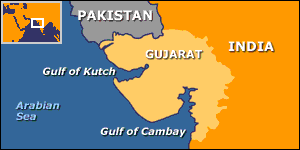
Copyright © January 16 2002
–
BBC News Online
–
|
|
” Marine scientists in India say an archaeological site off India’s western coast may be up to 9,000 years old.
The revelation comes about 8 months after acoustic images from the sea-bed suggested the presence of built-up structures resembling the ancient Harappan civilisation, which dates back around 4,000 years.
|
The Harappan civilisation is the oldest in the subcontinent. Although Palaeolithic sites dating back around 20,000 years have been found on the coast of India’s western state of Gujarat before, this is the first time there are indications of man-made structures as old as 9,500 years found deep beneath the sea surface.”
[full story]
“Search for ‘Lost’ Atlantis Centers on Strait of Gibraltar”
National Geographic News, USA – January 4, 2002
“It was Plato, around 360 B.C., who first described an ancient, exotic island kingdom catastrophically buried beneath the sea when its once-virtuous people angered the gods with their pronounced tilt toward sin and corruption.
Since then, creative souls ranging from Jules Verne to Kirk Morris, Maria Montez, Fay Spain, Jean-Louis Trintignant, Michael J. Fox, and Walt Disney have sought to explain and exploit the terrible fate that befell Atlantis.
Scientists and scholars, meanwhile, for 2,000 years have mulled the tale recounted by Critias in Plato’s Dialogues in hopes of finding clues as to whether Atlantis actually existed, and, if so, where it was, and how exactly it vanished.” –
[Full Story]
|
|
To understand why this News Page is sometimes late here is some information about Fibromyalgia
if you would like to support our marine archaeology research
The Morien Institute
Research Projects
please send us a book

from our Wish List
…
exclusive
…
October 2002
Morien Institute
illustrated interview with
Professor Masaaki Kimura
of the University of the Ruykyus,
Okinawa, Japan, regarding
the discovery of:
“Megalithic structures found underwater off the coast of
Yonaguni-jima, Japan”
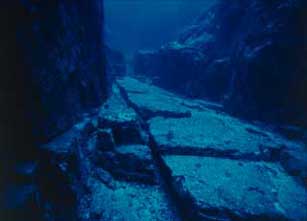
…
exclusive
…
June 2002
Morien Institute
illustrated interview with
Dr Paul Weinzweig
of Advanced Digital Communications,
Havana, Cuba, regarding
the discovery of:
“Megalithic urban ruins discovered off the coast of Cuba”
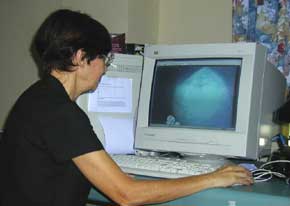
Books about
Underwater Discoveries

“Underworld: Flooded Kingdoms
of the Ice Age”
Graham Hancock

EU English Edition
“From Graham Hancock, bestselling author of Fingerprints of the Gods, comes a mesmerizing book that takes us on a captivating underwater voyage to find the ruins of a lost civilization that’s been hidden for thousands of years beneath the world’s oceans. While Graham Hancock is no stranger to stirring up heated controversy among scientific experts, his books and television documentaries have intrigued millions of people around the world and influenced many to rethink their views about the origins of human civilization.
Now he returns with an explosive new work of archaeological detection. In Underworld, Hancock continues his remarkable quest underwater, where, according to almost a thousand ancient myths from every part of the globe, the ruins of a lost civilization, obliterated in a universal flood, are to be found.”
“Gateway to Atlantis:
The Search for the Source of
a Lost Civilization”
Andrew Collins, David Rohl (Introduction)
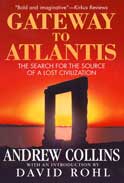
EU English Edition
“Andrew Collins – Deconstructs Plato’s dialogues and concludes that Cuba is the flagship of ancient Atlantis, the submerged regions of the Bahamas are its sunken kingdom, and a comet caused its destruction in 9000 BC. The author also proposes that Carthaginians visited Mexico and traded cocaine with Egypt.”
A historian’s investigation that may have solved one of humankind’s greatest and most enduring mysteries: the location of the ‘Lost City’ of Atlantis. More than 2,350 years ago Plato wrote of the fabulous island empire of Atlantis, which ruled the ocean as well as parts of the ‘opposite continent’ – what we know today as the Americas – until the single ‘terrible day and night’ that destroyed it in a storm of earthquakes and floods.
And now, after years of travel and research, Andrew Collins has gathered convincing evidence that may establish not only that Atlantis did indeed exist but also that remnants of it survive today. Collins’s journey into the past follows the clues left by Plato, and they take him far beyond Crete and the Mediterranean, where scholars in recent times have located Atlantis. So do mummies in Egypt, Roman wreckage in the West Atlantic, the African features of great stone heads in Mexico, and the explosion of a comet 10,500 years ago.”
“Submerged Cultural Resource Management: Preserving and Interpreting Our Sunken
Maritime Heritage”
James D. Spirek (Editor),
Della A. Scott-Ireton (Editor)
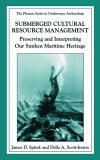
EU English Edition
“This vital book is a collection on the various ways archaeologists and resource managers have devised to make available and interpret submerged cultural resources for the public, such as underwater archaeological preserves, shipwreck trails, and land-based interpretive media and literature. The concept of preserves, parks, and trails has proven to be an effective and popular method of public education and heritage tourism with the end result being a greater public understanding of the value of preserving and protecting shipwrecks, and other submerged cultural resources, for the future.
Within each contribution, the authors focus on: legislation; economic benefits; interpretation methods; problems and successes; future directions regarding their preserve, park, or trail programs. Various approaches to the concept have been explored and this book is an effort to make available our experiences in the management of submerged cultural resources for the public. This volume is an invaluable resource to underwater archaeologists, cultural and heritage resource managers, museum and heritage educators and those studying these professions.”
“Atlantis and Earth’s
Shifting Crust”

VHS NTSC version
(USA and Canada)
“Eden in the East: The Drowned Continent of Southeast Asia”
Stephen Oppenheimer

EU English Edition
“A book that completetly changes the established and conventional view of prehistory by relocating the Lost Eden – the world’s 1st civilization – to SouthEast Asia. At the end of the Ice Age, SouthEast Asia formed a continent twice the size of India, which included Indochina, Malaysia, Indonesia and Borneo.
The South China Sea, the Gulf of Thailand and the Java sea, which were all dry, formed the connecting parts of the continent. Geologically, this half sunken continent is the Sunda shelf or Sundaland. He produces evidence from ethnography, archaeology, oceanography, from creation stories, myths and sagas and from linguistics and DNA analysis, to argue that this founder civilization was destroyed by a catastrophic flood, caused by a rapid rise in the sea level at the end of the last ice age.”
“Encyclopedia of Underwater and Maritime Archaeology”
James Delgado (Editor)
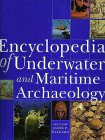
EU English Edition
“This encyclopedia is the first comprehensive reference book on the discovery and recovery of underwater archaeological remains around the world and across time. Written by archaeologists and other scientists who have made the discoveries, it offers a wealth of authoritative and accessible information on shipwrecks, drowned cities, ritual deposits, and other relics of our submerged past.
The volume’s 450 alphabetically arranged entries cover sites from prehistory to the modern era (including Titanic), legislation and legal issues, organizations, nations and regions, research themes, and technology and techniques. Length generally ranges from two paragraphs for reef netting and Southampton Centre for Maritime Archaeology to about four pages for Great Lakes and remote sensing.”
“The Atlantis Blueprint: Unlocking the Ancient Mysteries of a
Long-Lost Civilization”
Colin Wilson & Rand Flem-Ath

EU English Edition
“The Great Pyramid. Stonehenge. Machu Picchu. For centuries, these and other sacred sites have inspired wonder among those who ponder their origins. Conventional science tells us they were constructed by local peoples working with the primitive tools of a fledgling civilization. Who could have built these elaborate monuments? How did they do it? And what were their incomprehensible efforts and sacrifices designed to accomplish?
Now comes a revolutionary theory that connects these mysteries to reveal a hidden global pattern – the ancient work of an advanced civilization whose warnings of planetary cataclysm now reverberate across one hundred millennia. International bestselling author Colin Wilson and Canadian researcher Rand Flem-Ath join forces to share startling evidence of a fiercely intelligent society dating back as much as 100,000 years – one that sailed the oceans of the world, building monuments to preserve and communicate its remarkable wisdom.”
“When the Sky Fell:
In Search of Atlantis”
Rose Flem-ath, Rand Flem-ath, (Introduction) Colin Wilson

EU English Edition
“Did Atlantis really exsist? If so, where was it, and what happened to it? Inspired by the theory that at various stages in prehistory the earths crust shifted dramatically, causing violent earthquakes, tidal waves,devastating climatic changes, the authors examine the clues as to the location of Atlantis entrusted to Plato by Egyptian priests, the extraordinary similarities between myths from around the world, and ancient and amazingly accurate maps of South America and ice free Antarctica that date long before the first European explorers ever reached those shores. They conclude that a civilization of highly intelligent seafarers did exists some twelve thousand years ago, but was destroyed by a geological disaster leaving only a few survivors to safeguard its relics and legends for posterity.”
“Maritime Archaeology: A Technical Handbook”
Jeremy Green
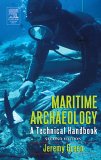
EU English Edition
“Jeremy Green’s systematic overview of maritime archaeology offers a step-by-step description of this fast-growing field. With new information about the use of computers and Global Positioning Systems, the second edition of this handbook shows how to extract as much information as possible from a site, how to record and document the data, and how to act ethically and responsibly wth the artifacts.
Treating underwater archaeology as a discipline, the book demonstrates how archaeologists, “looters,” academics, and governments interact and how the market for archaeological artifacts creates obstacles and opportunities for these groups. Well illustrated and comprehensive in its approach to the subject, this book provides an essential foundation for everybody interested in underwater environments, submerged land structures, and conditions created by sea level changes.
* Covers five broad areas: searching for sites, recording sites, excavation, management of collections, and study, research and publication.
* Describes a variety of techniques and procedures in considerable detail, accessible to both professional and amateur archaeologists.
* More than 250 photographs, charts, and diagrams explain everything from how to operate a sextant and a hand-held GPS to how a swim line should be laid out by the dive team before excavation begins.”
“Discovery of Atlantis:
Startling New Evidence and
the Case for Cyprus”
Robert Sarmast

EU English Edition
“Plato provided 53 physical clues in his famous dialogue Critias–the original account of the story of Atlantis that is the sole basis of all Atlantis research. Discovery of Atlantis proves that the island of Cyprus and the underwater landscape just south of Cyprus is a perfect match with 51 of these clues. Exclusive 3D bathymetric maps based on new scientific data show for the first time a stretch of sunken land off of Cyprus.
The general layout of the landscape of Atlantis as described by Plato is easily discernible on this underwater landmass, as well as the precise location of its capital–Atlantis City. This robust empirical data is joined with other original findings based on mythological analysis and historical research, making the case for Cyprus increasingly obvious.”
“Atlantis, the Antediluvian World”
Ignatius Donnelly
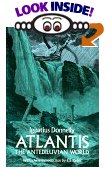
EU English Edition
“The most important book of its time (1882) on the subject of Atlantis. The author claims there once existed in the Atlantic Ocean, opposite the mouth of the Mediterranean Sea, a large island, which was the remnant of an Atlantic continent, and known to the ancient world as Atlantis, that Atlantis was the region where man first rose from a state of barbarism to civilization, that the gods and goddesses of the ancient Greeks, the Phoenicians, the Hindus, and the Scandinavians were simply the kings, queens, and heroes of Atlantis, that the mythologies of Egypt and Peru represented the original religion of Atlantis, which was sun-worship.”
“Man: 12, 000 Years Under the Sea, a Story of Underwater Archaeology”
Robert F. Burgess &
George F. Bass

EU English Edition
“Man: 12,000 Years Under the Sea is the dramatic story of underwater archaeology. The work looks back at Greek divers’ discovery of ancient statues in the sea, and covers the history of marine archaeology to the present, including the recovery of Ice Age Man’s 12,000-year-old remains from the bottom of Florida springs. Burgess writes from his experience for an assured exciting read.
In ‘Man: 12,000 Years Under the Sea’ Robert Burgess gives us a peak at the work done by sponge divers, treasure hunters and underwater archaeologists. The excitement and hazard of underwater exploration is so clearly described that I was tempted to get a diving suit to join them.”
“Atlantis of the West:
The Case For Britain’s Drowned
Megalithic Civilization”
Paul Dunbavin

EU English Edition
“Do Welsh legends of lost cities beneath the sea match Plato’s descriptions of the island civilization of Atlantis? Do Irish myths of a golden age when the eastern Irish Sea was a flowery plain describe the same place Herodotus said disappeared beneath the waves during a single day and night of geological upheaval millennia before Ancient Greece? Author and researcher Paul Dunbavin has embarked on a multidisciplinary investigation into how science could explain such a catastrophe and how modern archaeological findings point to a possible location for lost Atlantis.”
This book theorizes that the Middle Neolithic period around 5,000 years ago was a time of dramatic climate and sea-level changes all around the world. From an up-to-date scientific perspective, Dunbavin distills an array of significant geological theories and then examines the archaeological and mythological record-which together leads to a lost land thousands of years ago in the Irish Sea that was still mentioned in ancient Welsh histories recorded in the 6th century.”
“Quest for the Lost Civilisation:
Ancient Mariners”

VHS NTSC version
(USA and Canada)
“The Atlantis Dialogue: Plato’s Original Story of the Lost City, Continent, Empire”
Plato, Aaron Shepard (Editor),
B. Jowett (Translator)

EU English Edition
“Atlantis was first introduced to world literature by the Greek philosopher Plato in two “dialogues” he wrote in the fourth century B.C. His tale of a great empire that sank beneath the waves has sparked thousands of years of debate over whether Atlantis really existed. But did Plato mean his tale as history, or just as a parable to help illustrate his philosophy?
In this book, you’ll find everything Plato said about Atlantis, in the context he intended. Now you can read and judge for yourself!”
“Seagoing Ships and Seamanship in the Bronze Age Levant”
Shelley Wachsmann
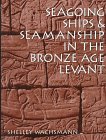
EU English Edition
“During the Bronze Age, the ancient societies that ringed the Mediterraneann, once mostly separate and isolate, began to reach across the great expanse of sea to conduct trade. This text presents an examination of how these early cultures took to the sea – and how they evolved as a result.
“Noah’s Flood: The New Scientific Discoveries About The Event
That Changed History”
William Ryan & Walter Pitman

EU English Edition
“A new scientific inquiry into the “great flood” myths of the Bible and other cultures uncovers evidence of a deluge in the Black Sea that wiped out the existing “Goddess” culture 7,500 years ago and spread the foundations of civilization across the globe.
Over the millennia, the legend of a great deluge has endured in the biblical story of Noah and in such Middle Eastern myths as the epic of Gilgamesh. Now two distinguished geophysicists have discovered a catastrophic event that changed history, a gigantic flood 7,600 years ago in what is today the Black Sea.
Using sound waves and coring devices to probe the sea floor, William Ryan and Walter Pitman revealed clear evidence that this inland body of water had once been a vast freshwater lake lying hundreds of feet below the level of the world’s rising oceans. Sophisticated dating techniques confirmed that 7,600 years ago the mounting seas had burst through the narrow Bosporus valley, and the salt water of the Mediterranean had poured into the lake with unimaginable force, racing over beaches and up rivers, destroying or chasing all life before it.”
“Ancient Boats in North-west Europe: Archaeology of Water Transport to AD 1500”
Sean McGrail
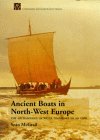
EU English Edition
“Professor McGrail provides an authoritative survey of water transport across Northern Europe from the Late Palaeolithic to the later Middle Ages, using evidence of excavations, but also documentary sources, iconographic and ethnographic evidence. In the process he answers such key questions as How were these boats built? What sort of environment were they used in? What speeds could they achieve? and how were they navigated?
First published in 1987, this text has been revised for a student and non-specialist readership. It provides an authoritative and comprehensive survey of water transport across Northern Europe from the Late Palaeolithic to the later Middle Ages using a variety of primary sources and excavations. This revised edition now contains a 4000-word postscript commenting briefly on maritime archaeology since 1987.”
“The Cave Divers”
Robert F. Burgess

EU English Edition
“Those who think that exploring underwater caves is too exotic a pastime to be of much interest will change their minds after reading this work by Burgess, author of books and articles about hunting for sunken treasure. Burgess is among those intrepid pioneers who have made major discoveries in underwater archaeology–finding not only huge caverns that are in effect vast air pockets but also inundated caves whose artifacts give evidence of human habitation, probably during the last ice age.
Although chapters on the evolution of diving equipment and underwater cameras will be of scant interest to general readers, there are exciting accounts of expeditions in Europe, the Yucatan peninsula, the Bahamas and especially Florida, rich in significant underwater sites–one of which proved that humans inhabited the Southeast almost 7,000 years earlier than scholars originally thought.
Life-threatening dangers abound, including nitrogen buildup in the blood (which causes the bends), disorientation, terrible visibility and entanglement in guide ropes leading from the entry point, which has killed many underwater explorers. Of special poignancy is the author’s recounting of the accidental death of a favorite diving companion. This is an interesting mix of adventure and archaeology that probes one of the earth’s last frontiers.”
“Cleopatra’s Palace:
In Search of a Legend”
Laura Foreman
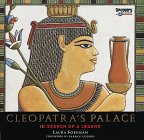
EU English Edition
“In 30 b.c., against the backdrop of Alexandria, Egypt, one of the most majestic of all ancient cities, a great queen proudly and defiantly took her life. More than two thousand years later, the world remains fascinated and haunted by this most intriguing woman, Cleopatra VII, yet practically everything we know about her is based on ancient text fragments, literature, and myth.
Gifted storyteller Laura Foreman brings Cleopatra’s legendary tale to life, from the founding of Alexandria by Alexander the Great, to Cleopatra’s ascent to the Egyptian throne amid treachery and betrayal, to her passionate alliances with Julius Caesar and Mark Antony and her doomed battle against Octavian.
But the legend doesn’t end there. Cleopatra’s Palace also presents the astounding recent findings of world-renowned underwater explorer Franck Goddio, who, with his team of underwater archaeologists, has succeeded in mapping the Royal Quarter of Ancient Alexandria, long submerged beneath the Mediterranean by cataclysmic earthquakes early in the millennium. In a fascinating narrative illustrated by exclusive underwater images, the expedition’s successes are presented, including the discovery of such artifacts as jewelry, statues, sphinxes, rare pottery, and an ancient shipwreck, as well as architectural remains that were found on the site of this magnificent drama.”
|
































